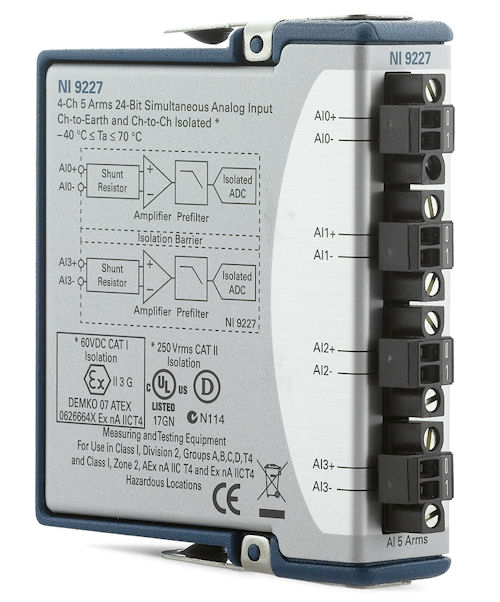How to Measure Current and Make Power Measurements
Latest News
May 12, 2014
 Dear Desktop Engineering Reader:
Dear Desktop Engineering Reader:
Today’s Check it out link takes you to a white paper from National Instruments called “How to Measure Current and Make Power Measurements.” Its focus is on measuring, monitoring and analyzing the large currents that you encounter in a production setting or a lab. You know, the kind of currents that at best will send you flying across the floor or brown out a nearby town. So digital multimeters are out, and transformers, transducers and data acquisition devices are in.
The paper has three main sections: Current Transformers and Transducers, Measurements Needed and Suggested Components for a Three Phase System. Each section looks at the basic issues and explains the role played by the major components when measuring currents. Tips and recommendations are sprinkled about liberally as are the occasional warning. NI products are mentioned and recommended, but the information conveyed applies broadly for anyone measuring, monitoring and analyzing power quality and usage in a manufacturing or lab setting.
The first section begins with a safety reminder, since measuring large currents comes with challenges beyond those of everyday signal acquisition. It then quickly turns to look at special-purpose current transformers or transducers. It explains the pros and cons of split core and solid core current transformers as well as where it is advantageous to use one or the other. Cost factors are raised, and what to expect in terms of accuracy are laid out for you to think about.
This section reserves its largest discussion to output signals from current sensors and their integration with measurement systems. Since sensor outputs can and will differ significantly, your key takeaway here might be the advisory to thoroughly understand the sensors under consideration and how they interface with your instrumentation. Guidance is provided on what you need to look out for.
“Measurements Needed,” the second section, looks at the fundamental power measurements — voltage, current and phase offset. Each of these are mapped to various equipment that NI offers, such as modules for waveform power measurements or modules for measuring current with high amperage, such as the NI 9227 (the image above), a four-channel current input module that can measure up to 5A directly. The sections end with a brief demonstration of how you can use the NI LabVIEW Electrical Power Suite to compute phase offset.
In the third section, “Suggested Components for a Three-Phase System,” is essentially a spec sheet for building a system that can measure a single-phase two-wire, single-phase three-wire or three-phase three-wire system. In addition to the recommended hardware, it lists the analysis functions in the full version of the NI LabVIEW Electrical Power Suite that conform to the IEC 61000-4-30:2008 standard, which defines the methods for measuring and interpreting the results of power quality parameters in 50/60 Hz AC power supply systems.
The paper wraps with a brief blurb and link to “Power Quality Monitoring and Analysis,” a very interesting on-demand webinar (no registration) that shows you what the paper discusses in action, including power monitoring basics, required hardware measurements and software analysis functions. This 38-minute webinar is one of six broadcasts in NI’s Green Engineering Virtual Event Series, which explores the factors driving the demand for eco-friendly products and technologies with both environmental and economic benefits. In it, there’s a quick case study of a steel manufacturer and how it built a power monitoring and analysis system that is a must see.
You can read the “How to Measure Current and Make Power Measurements” white paper online or you can download it as a four-page PDF. Both versions provide links to NI data acquisition equipment as well as links to manufacturers of current measurement transformers and/or transducers. Make sure to take in the webinar. The presenter uses a house lamp and a power drill to demonstrate transients so well that it should be incorporated into every class introducing electricity to the next generation.
“How to Measure Current and Make Power Measurements” is a frank and well-illustrated presentation. It recognizes that each large current monitoring and analysis application is unique, yet understands that the fundamentals of measuring large currents safely are a common concern no matter the application.
Thanks, Pal. – Lockwood
Anthony J. Lockwood
Editor at Large, Desktop Engineering
Subscribe to our FREE magazine, FREE email newsletters or both!
Latest News
About the Author
Anthony J. Lockwood is Digital Engineering’s founding editor. He is now retired. Contact him via [email protected].
Follow DE






